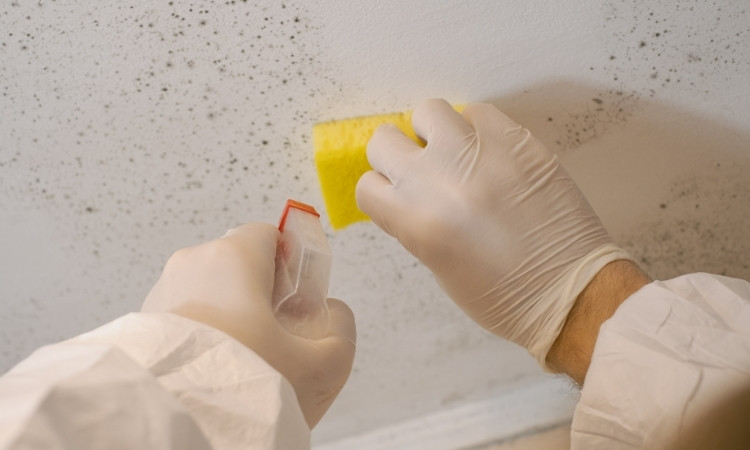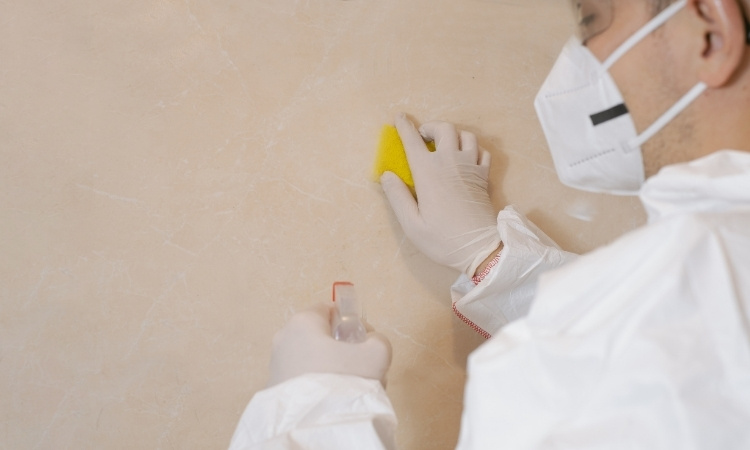To keep the homes clean and attractive, it is crucial to remove food stains from walls and floors. Food stains on walls are common in kitchens and dining areas. Therefore, removing these stains without damaging the paint can be tricky. One option is to use harsh cleaners and scrub too hard.
This can cause the paint to fade or peel. Luckily, other simpler methods are available to remove food stains safely while keeping your walls looking fresh. This guide will show you the best ways to clean food stains without harming your wall paint.
How to Remove Food Stains Without Damaging Wall Paint?
Removing food stains from walls is an essential yet challenging task. If you try it too gently, the stains will persist. On the contrary, if you try too hard, you will likely end up damaging the paint itself. Therefore, it is tricky to clean food stains from painted walls, especially in the humid conditions in Singapore.
This section presents PS Painting Services Singapore’s guide to removing food stains from painted surfaces. Moreover, you can call them for their professional condo painting, house painting, and room painting services in Singapore.
1. Act Quickly
When the stain is imposed on the painted surface, you have the time to remove it without much effort. The sooner you clean a food stain, the easier it will be to remove. Fresh stains do not penetrate the paint too quickly.
As soon as you notice a spill, blot it gently with a dry cloth to remove it immediately. Avoid rubbing, as this can spread the stain further. If the stain has dried, do not scrape it off forcefully. Instead, soften it first with a damp cloth and then clean it off.
2. Use Mild Soap and Water
A simple solution of mild dish soap and warm water is enough for most food stains. Mix a few drops of dish soap with warm water in a bowl. Dip a soft sponge into the soapy water and carefully wipe the stain in a circular motion. Once the stain is gone, wipe the area with a clean, damp cloth to remove the soap residue. Dry the wall with a soft towel to eliminate the stain completely.

3. Try Baking Soda Paste for Tough Stains
Some kitchen stains, such as curry and ketchup, can be more stubborn. To eliminate these stains, mix baking soda with a bit of water to make a paste. Apply the paste to the stain using a soft cloth. Let it sit and do its work for a few minutes. Afterward, gently wipe it off with a damp cloth. Baking soda is mild and will not damage the paint but effectively remove stains.
4. Use White Vinegar Solution
White vinegar is great for breaking down stains without harming paint. All you need to do is mix equal parts of white vinegar and water in a spray bottle. Spray the solution onto the stain, grab a cup of coffee, and enjoy it while the solution does its work.
Then, wipe it carefully with a soft cloth. Vinegar effectively removes grease stains and sticky residues. However, avoid using too much vinegar, as excessive moisture can weaken the paint over time.
5. Remove Grease with Cornstarch
Grease stains can be tricky, especially in the kitchen. Cornstarch is a natural absorbent that is quite effective against these stains. Sprinkle cornstarch directly onto the grease stain and let it sit for 10–15 minutes. It will absorb the grease from the wall. Afterward, wipe it off with a dry cloth and clean the area with mild soap and water. This method effectively removes oil without rubbing or scrubbing, which could damage the paint.
6. Use a Magic Eraser for Light Stains
A magic eraser is an excellent tool for removing minor stains. At first, dampen the eraser slightly and gently rub the stain. Be careful not to scrub too hard, as this can damage the paint and the stain. Always test a small, hidden area first to ensure it does not affect the paint finish.

7. Avoid Harsh Chemicals and Abrasive Scrubbers
Bleach, strong detergents, and abrasive scrubbers can strip paint and leave visible marks. Always use mild cleaning solutions and soft cloths to prevent damage. If the natural solutions do not work for you, choose gentle, paint-safe stain removers available in stores.
8. Prevent Future Stains
To reduce future food stains, use washable paint for kitchen and dining area walls. These paints allow easier cleaning without damaging the finish. You can also use splash guards to prevent grease and sauce stains in cooking areas. The most important thing is regularly wiping down walls to maintain appearance.
Conclusion
To make a long story short, you need to remove food stains as soon as possible. Food stains on walls are common but do not have to be permanent. By using the above techniques, you can remove stains without damaging your wall paint. Moreover, act quickly and avoid harsh chemicals to ensure your walls remain fresh and clean. With these simple steps, you can keep your home neat and stain-free.

